Today I’m going to show you one of the planet’s most famous cities: Paris. There are countless approaches and topics to talk about Paris. Are you interested in art, architecture, variety shows, history, monuments, parks, etc.? Paris won’t deceive you.
Warning: Paris is a bustling city. Don’t be surprised if you meet in its streets, shops or coffee bars, unfriendly people. Day by day for an ordinary native is hard, and it is summarized as the French saying goes: metro-boulot-dodo that means subway-job-sleep. A completely different life from a tourist.

Tour Eiffel from Trocadero
SOME HISTORY
In Paris, there is an imaginary line denominated in French, Axe Historique (Historical Axis). Go after it, and you’ll find the entire history of Paris. It covers the following places:
Île de la Cité
It’s the place where the Parisi tribe made their home along the river Seine about 3000 years ago. The city took its name from them even though Romans called it Lutetia later.
Le Louvre
Nowadays the Louvre is a fantastic museum, but it was once the Kings of France’s home, a royal palace.
Arc de Triomphe
It was built at the request of Napoleon, an accurate sample of megalomaniac being. The ancient Roman arches of triumph inspired it. You can read the name of the most critical battles where the Napoleonic army was involved. Even the fights that Napoleon lost, for example, Bailén battle.
Avenue Charles de Gaulle
It is named after General de Gaulle. He was one of the most important public figures in the contemporary history of France. He led the Free French Army during World War II and became president of France. This Avenue links the Arc de Triomphe with La Défense.
La Défense
This is the modern and financial district. The Grande Arche is placed here. It has a cubic shape and was built when Jacques Chirac was the President of France in the 80s. Many rulers become megalomaniac and wish to be remembered by building massive monuments.
POINTS OF INTEREST
Place de la Concorde
A literal translation into English could be _Harmony Square_. It is weird and sarcastic to give this name to a place where thousands of people were slaughtered during the French Revolution. King Louis XV built it. His son Louis XVI and his daughter-in-law Marie Antoinette were beheaded here.

Place de la Concorde
The Panthéon
This temple can be found in the Latin Quarter. In the beginning, it was a church devoted to St. Genevieve but now serves as a laic mausoleum seating the corpses of eminent French citizens.

Le Panthéon
Le Marais et la Place des Vosges
The Place des Vosges is found in the Marais neighborhood. It was a posh square to reside in during the 17th and 18th centuries. The king Henri IV built it in 1612.
Le Marais is one of the best examples of what ancient Paris looked like before Baron Haussman demolished the center of Paris to update the city by building large avenues and colossal squares. Here you can find a maze of cobblestone pathways.
Before the French Revolution, Le Marais was an aristocratic district, and after the Revolution, it became a popular neighborhood that hosted one of the most important Jewish population in Paris.
In the 80s Le Marais become the heart of LGTB society.
Nowadays Le Marais is one of Paris’ major sites for art galleries. It has turned out to be a classy and glamorous spot that houses many chic restaurants and stylish shops.

Le Marais
Maison de Victor Hugo
Paris is a literary city with an excellent appeal for writers. Victor Hugo, who lived there in the nineteenth-century, was one of the most distinguished French novelists. He belonged to the Romantic movement, a trend that focused attention on emotions and individualism. He was also a poet and a painter. His house is in the Place des Vosges. Literature lovers can’t miss this beautiful museum where his belongings, his bed or his high desk are displayed. He used to write standing.
Hugo was a versatile personage and had many casual love affairs during his life. He gave free rein to his desire even few time before he died. By the way, he was «only» 83 years old when he died. He looked for a broad diversity of females of all ages. Be they artists, fans, enthusiasts, dancers, single women, housewives, followers, whores, housemaids, etc, for intercourse with them. As an accomplished writer, he methodically detailed his affairs by applying his own code to keep them hidden. For example, similarity permitted him to cover the real definition: a woman’s Suisses (Swiss in French) were her boobs due to the evidence that Switzerland is a country famous for its milk. After dating a young woman named Laetitia he would record Joie (Happiness) in his diary. If he wrote t.n. (toute nue) he indicated she stayed nude in front of him. He also took Latin abbreviations (osc. for kisses). And finally words with the same pronunciation were frequent: seins (breasts in French) becomes saint; poële (stove) actually refers to poils (pubic hair). That’s jaw-dropping!

Victor Hugo’s House
Musée Carnavalet (Musée de l’histoire de Paris)
Without leaving Le Marais district, we can visit another exciting museum: The Musée Carnavalet. It is devoted to the history of Paris, and it involves two palaces from the 16th and 17th centuries. You can see the splendid specimens of the museum: Gallo-Roman and medieval archeological discoveries, souvenirs of the French Revolution, pictures, images, furniture and objects of art.
If Hugo liked to write while standing, Marcel Proust, one of the most influential authors of the 20th century who wrote À la recherche du temps perdu (In Search of Lost Time), liked to write lying in bed where he spent much of his life. His bedroom was the dungeon where he devoted himself to the duty of writing. The bed is exposed here at the Carnavalet Museum.

Musée Carnavalet
Centre Pompidou
The Pompidou Centre is one of the most popular places in Paris. It is a large building in the Beaubourg area of Paris, close to Les Halles and the Marais. It was created in the style of high-tech architecture by Richard Rogers, Renzo Piano, and Gianfranco Franchini.
It houses the Bibliothèque publique d’information (Public Information Library), the Musée National d’Art Moderne, which is the most significant museum for modern art in Europe; and IRCAM, a center for music and acoustic investigation.
This structure has all its color-coded service conduits, tubes, and circuits connected to the exterior; like a body with all its veins and nerves visible on the outside.
Why elevators and other facilities are placed on the outside? Because there is more room inside for the library, institute, shops, public library, and art museum.
This modern building contrasts with classic ancient buildings.
After leaving the Pompidou Centre don’t miss the Stravinsky Fountain, a collection of 16 mechanical moving sculptures that squirt water.

Centre Pompidou
Le Quartier Latin
Visiting the Quartier Latin is mandatory for every visitor in Paris. It is in the 5th and 6th arrondissements, on the Left Bank. The area has plenty of relaxed restaurants and cafés filled with tourists and students. There are diverse points of interest to hit, amid them the Luxembourg gardens, the Pantheon, the Théatre de l’Odeon; or the Sorbonne, one of the oldest universities in the world.
As you walk through the area, you will also come across the Rue Mouffetard a charming street where you can choose a laid-back restaurant to restore yourself after a hiking day and continue strolling to Luxembourg gardens where you can digest your lunch sitting in a chair reading a book under a hundred-year-old tree. The far-away children’s voices and birds songs will make the soundtrack for you.

Rue Mouffetard
The Arc de Triomphe and Place Charles de Gaulle or Place de l’Étoile (Star Square)
This arc is in the middle of the world’s most massive roundabout: Place Charles de Gaulle where 12 grand avenues meet. It makes the shape of a star. From the top of the Arc, you have one of the best panoramas of Paris.

Place Charles de Gaulle – Étoile
EIFFEL TOWER
It was designed for the 1889 World Fair. Parisian people didn’t like that huge pile of iron, and they gave it the name of ‘metal asparagus’. Luckily nobody cared about it because they thought it was supposed to be dismantled at the end of the World Fair. It still rises majestically above the city and has become one of the most significant tourist attraction of the town. It is the symbol of Paris.
Are you sporty? Really? Then don’t take the lifts, Eiffel Tower is only 325m high without taking the antennas into account. The tower offers a beautiful panorama of the Ville Lumière.
What does Ville Lumière mean? This nickname means the City of Lights.

Eiffel Tower
À bientôt!!












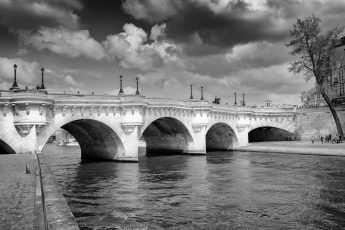






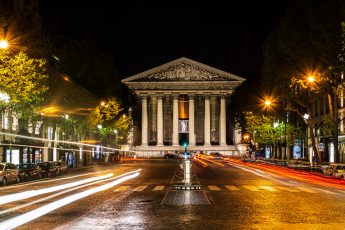









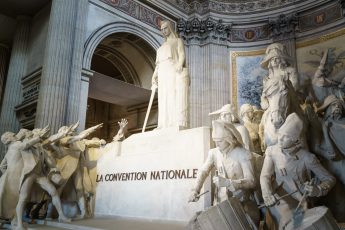


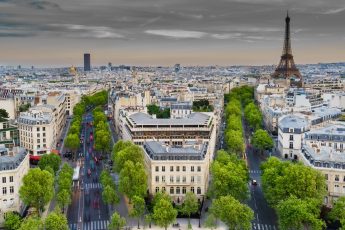



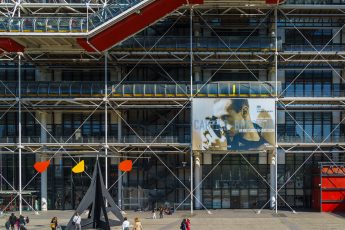








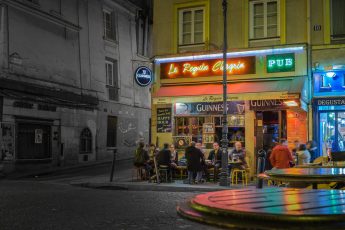

Hecho en falta Les Invalides y un comentario amigo sobre L´Empereur…
Faltan muchas cosas porque es la primera parte. París no cabe en un solo post. C’est trop grand 😉